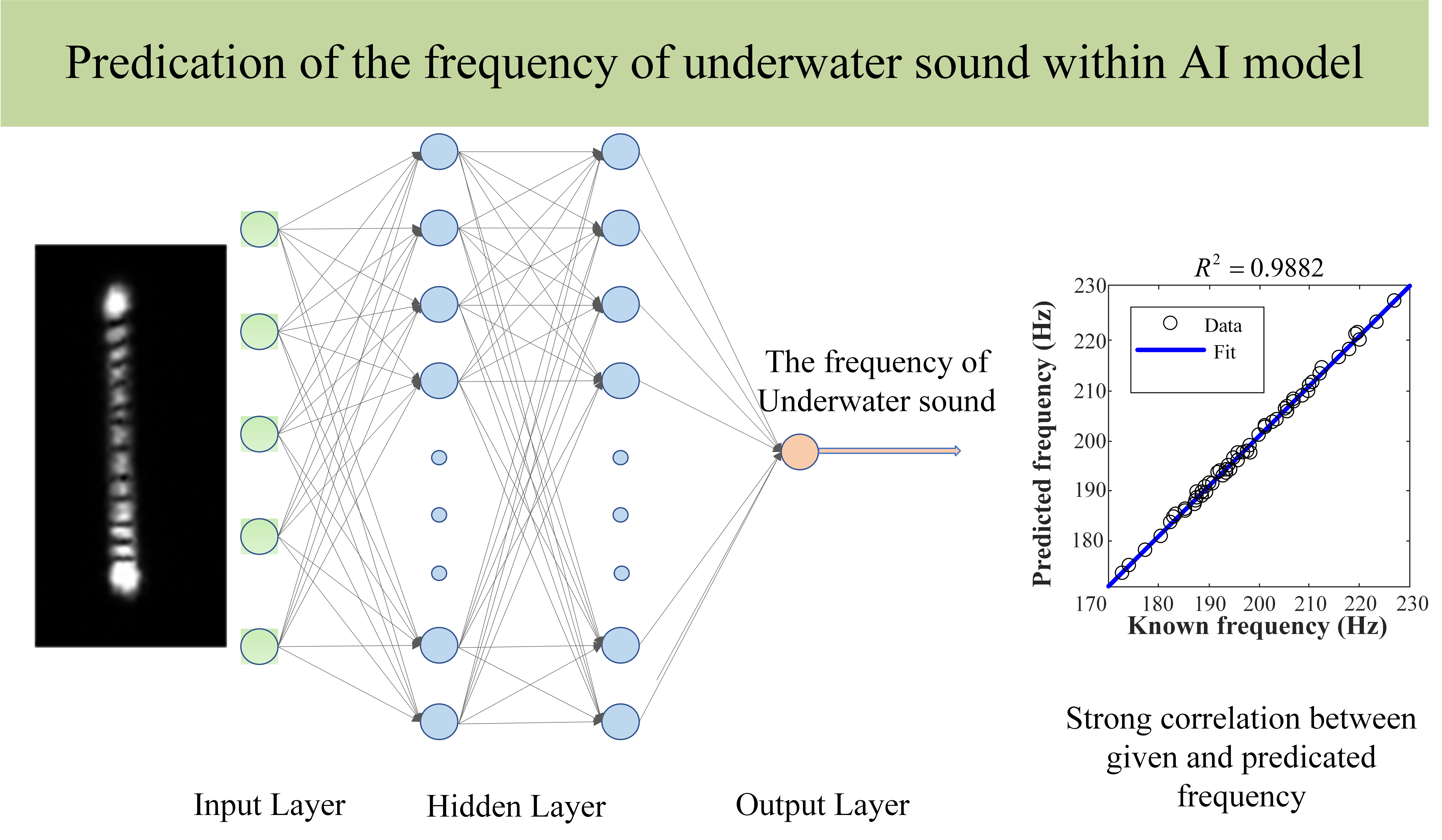
To evaluate underwater sound, a simple non-invasive optical technique based on self-interference to detect low-frequency underwater acoustic signals was demonstrated. Clear self-interference fringes of a laser beam reflected from the surface capillary wave transformed from a low-frequency underwater acoustic signal by a cylinder were observed. This study was also aimed at developing an artificial neural network (ANN) model with input from an optical pattern. The relationship between the optical pattern and the frequency of underwater sound was established, and an optimal combination of hyper-parameters was obtained. By analyzing the fringe region and the fringe interval, the frequency of the underwater acoustic signal and its relative amplitude were measured. A model based on physical optics modified the fringe distribution function, and the theoretical fit with the modified function was in good agreement with experimental observation. The BP-ANN model exhibited good performance in establishing the relationship between the optical pattern and underwater sound.